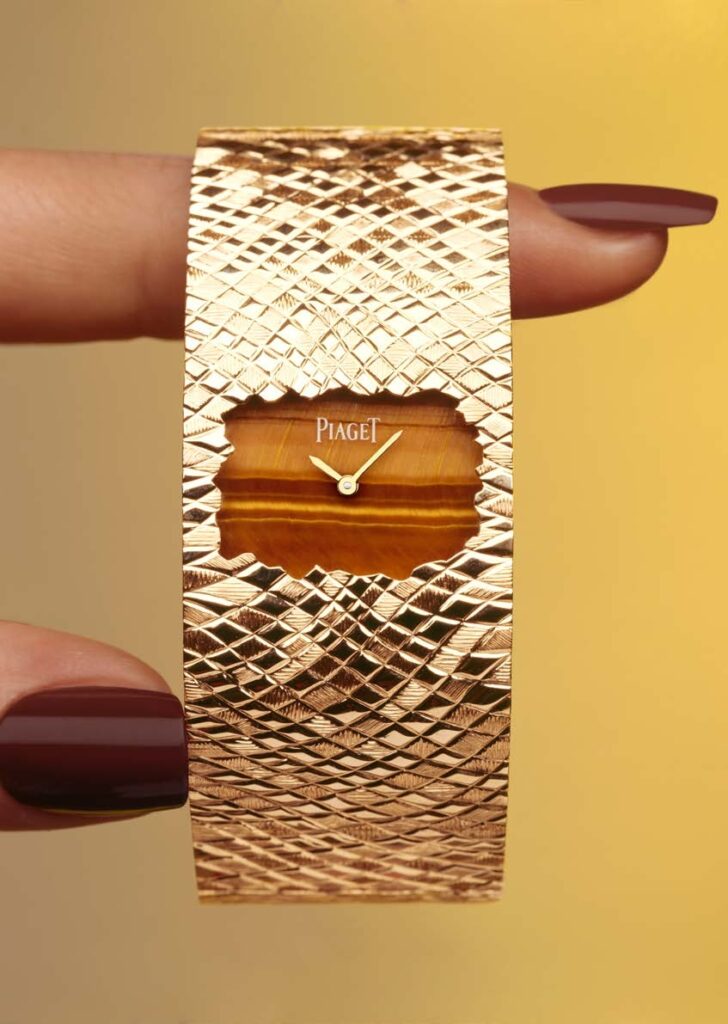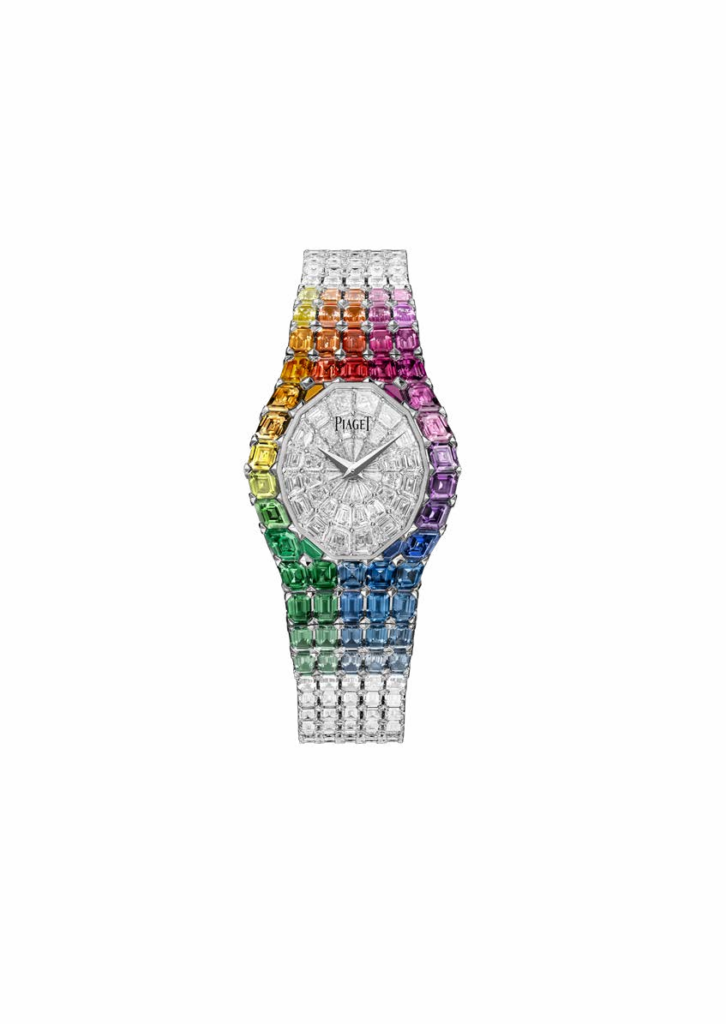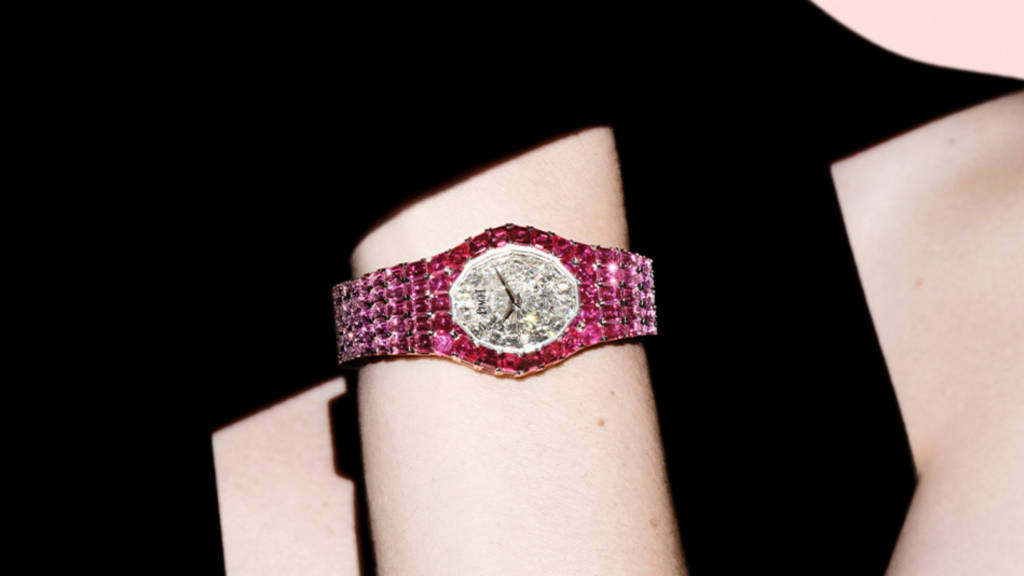Piaget celebrates six decades of groundbreaking design by unveiling new extraordinary creations which honor the Maison’s legacy of shaping time into art, driven by its characteristic audacity and elegance.

Time shapes form, and form shapes time. For Piaget, this interplay has defined a legacy which began with the pursuit of ultra-thin watchmaking in 1874 on a family farm in la Côte-Aux-Fées in the Swiss Jura’s mountains. The Maison, which celebrated its 150th anniversary in 2024, remains steadfast in founder Georges-Édouard Piaget’s motto: “always do better than necessary”—a philosophy that has transformed its watchmaking precision into artistic expression. Piaget’s journey began with mechanical mastery, but the Maison’s audacious artistry sets it apart. From the careful calibration of gears to the bold geometry of cases, from the precise measurement of time to the fluid poetry of jewellery, Piaget has crafted not just timepieces, but a visual language that speaks across generations.


Now, in 2025, Piaget presents new masterpieces embodying this ongoing dialogue between heritage and innovation. From striking Swinging Sautoirs or cuff watches which capture the free spirit of the late 1960s, to a reimagined Piaget Polo 79 in white gold, or the radiant Rainbow Aura celebrating the artistry of gem-setting which has distinguished Piaget since the 1960’s.Together, these visual signatures don’t merely tell time, but tell Piaget’s story. Each piece serves as a testament to Piaget’s unique ability to shape the measurement of time into art, where timepieces transcend their function to become enduring works of art.
1969: A Creative Renaissance Begins
The year 1969 marked a pivotal moment in Piaget’s history, a creative renaissance that would reshape the Maison’s identity. While Piaget had already established itself as a master of watchmaking, especially of the ultra-thinness with the 9P movement in 1957 or the 12P in 1960, the Maison was about to venture beyond the conventional boundaries of Swiss watchmaking. In an unprecedented move for a Swiss watchmaker, Piaget sent its designers to the Paris couture shows in the 1960s, where they immersed themselves in the world of fashion. They returned to Switzerland inspired, translating this inspiration into revolutionary designs, sketching timepieces directly onto models portrayed in glossy magazine pages. Their vision transcended the traditional constraints of wrist-worn watches, reimagining time as an element of style that could be worn as necklaces, cuffs.

This creative liberation culminated in the landmark 21st Century Collection, where the Maison demonstrated how technical mastery could ignite artistry, changing the relationship between jewellery and timekeeping. Free from the weight of centuries-old expectations constraining many Swiss manufactures, Piaget embraced the vibrant energy of the era with a distinctly youthful spirit, just like the artists and designers who defined the 1960s. The collection brought unexpected combinations of depth, shape, and color, infused with a flamboyant sensibility that challenged the classic traditions of Swiss watchmaking while still honoring its heritage. The asymmetrical trapeze shape became a Piaget signature, dangling from long Swinging Sautoirs and meticulously crafted into cuffs, often enhanced by the vibrancy of ornamental stone dials. These Swinging Sautoirs and cuff watches became the most emblematic creations of its 21st Century Collection. Under the guidance of visionary designer Jean-Claude Gueit, these became more than just timepieces, embodying a dynamism and freedom of form and expression that defined an entire era.




In 2025, Piaget expands its Swinging Sautoir and Hidden Treasures collections, offering a new level of individuality in the spirit of the original 21st Century Collection. A variety of colorful stones (ruby-root, turquoise, tiger-eye…), are added to the Swinging Sautoirs, set on the Maison’s iconic and hand-woven chains. Piaget also continues its tradition of cuff watches with a new cuff featuring an audacious, partially hidden opal dial. The texture of the asymmetrical white gold case is inspired by nature, the wavy pattern appearing as if it’s been gently sculpted by wind and water. When the second one features a pink gold snake pattern, adorned with a green enamel dial. As with the Swinging Sautoir’s threaded gold chain, the Hidden Treasures are handcrafted by Piaget’s master goldsmiths, inheriting generations of the Maison’s tradition. The 21st Century Collection represented more than just timepieces; it embodied a philosophy where mechanical mastery served artistic expression. Each piece celebrated individuality, transforming the function of timekeeping into statements of personal style. This revolutionary approach—where watches became art—continues to define Piaget.
1989: The Aura of Artistry

Piaget has continued to push the boundaries of integration – of shape and form, case and bracelet, jewellery and watchmaking. Introduced in 1989, the Aura epitomizes this mastery of harmony. First explored with the Piaget Polo collection, the Aura elevated the seamless fusion of case and bracelet to new heights. Nearly entirely gem-set with diamonds so meticulously placed they appear invisible; the Aura radiated a brilliance living up to its name. Piaget incorporated a mechanical movement into the Aura, demonstrating its ability to marry watchmaking with aesthetic innovation. The result was a timepiece that defied expectations: a seamless fusion of case and bracelet that vanishes beneath the touch yet dazzles the eye. The Aura was, quite simply, the pinnacle of Piaget. In 2025, Piaget reimagines this legacy with the Rainbow Aura, a celebration of the Maison’s signature mastery of color. This extraordinary creation features a precisely calibrated spectrum of gemstones, each carefully selected and positioned to create a seamless gradient of color that seems to float on the wrist. The Rainbow Aura transforms mechanical timekeeping into a luminous canvas for artistry, where every stone captures not just light but imagination.

Throughout its history, Piaget has demonstrated an extraordinary ability to transform the language of time, mastering the art of shape and form. This mastery isn’t merely aesthetic—it stems from a deep understanding that true innovation requires a canvas of technical excellence. In transforming time-telling into art, Piaget doesn’t merely mark the time—it shapes moments of enduring beauty, where heritage inspires innovation across generations.






